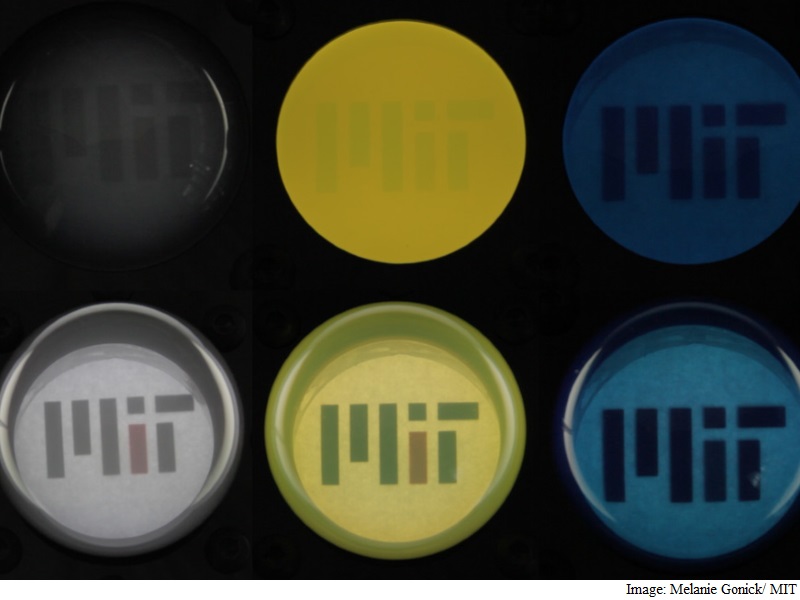- Home
- Science
- Science News
- Novel Material Could Offer Cheap Alternative to Smart Windows: Study
Novel Material Could Offer Cheap Alternative to Smart Windows: Study

For buildings and windows that automatically react to light, you do not have to spend as much on heating and air conditioning.
"The problem is that these materials are too expensive to produce for every window in a building. Our idea was to look for a cheaper way to let through more or less light, by stretching a transparent polymer that is readily available," explained Lopez Jiménez, researcher at Massachusetts Institute of Technology (MIT).
The research team included Shanmugam Kumar from the Masdar Institute of Science and Technology in Abu Dhabi and Pedro Reis, professor of civil and environmental engineering and mechanical engineering.
The team analysed the light-transmitting properties of a simple block of PDMS - a widely used rubbery, transparent polymer.
The polymer block contained some darkened regions, and the team was looking to see how deforming the block would change the light traveling through the material.
"It was a happy accident. We were just playing with the material, and we soon got interested in how we can predict this and get the numbers right," Jiménez said in a paper published in the journal Advanced Optical Materials.
After following some more experiments, the researchers were able to come up with the new material.
"If you give me the initial material properties and measure the incoming light intensity, we know exactly how much light will go through with deformation," Jiménez noted.
Jiménez envisions covering window surfaces with several layers of the polymer structure. The designers could use the group's equation to determine the amount of force to apply to a polymer layer to effectively tune the amount of incoming light.
For the latest tech news and reviews, follow Gadgets 360 on X, Facebook, WhatsApp, Threads and Google News. For the latest videos on gadgets and tech, subscribe to our YouTube channel. If you want to know everything about top influencers, follow our in-house Who'sThat360 on Instagram and YouTube.
Related Stories
- Samsung Galaxy Unpacked 2025
- ChatGPT
- Redmi Note 14 Pro+
- iPhone 16
- Apple Vision Pro
- Oneplus 12
- OnePlus Nord CE 3 Lite 5G
- iPhone 13
- Xiaomi 14 Pro
- Oppo Find N3
- Tecno Spark Go (2023)
- Realme V30
- Best Phones Under 25000
- Samsung Galaxy S24 Series
- Cryptocurrency
- iQoo 12
- Samsung Galaxy S24 Ultra
- Giottus
- Samsung Galaxy Z Flip 5
- Apple 'Scary Fast'
- Housefull 5
- GoPro Hero 12 Black Review
- Invincible Season 2
- JioGlass
- HD Ready TV
- Laptop Under 50000
- Smartwatch Under 10000
- Latest Mobile Phones
- Compare Phones
- Infinix Smart 9 HD
- Lava Yuva Smart
- Samsung Galaxy S25 Ultra
- Samsung Galaxy S25+
- Samsung Galaxy S25
- Realme 14 Pro 5G
- Realme 14 Pro+ 5G
- Itel Zeno 10
- Asus Chromebook CR11
- Lenovo Yoga Slim 9i (2025)
- Asus ROG Flow Z13 (2025)
- Xiaomi Pad 7
- Titan Evolution
- Noise ColorFit Pro 6
- Sony 65 Inches Ultra HD (4K) LED Smart TV (KD-65X74L)
- TCL 55 Inches Ultra HD (4K) LED Smart TV (55C61B)
- Sony PlayStation 5 Pro
- Sony PlayStation 5 Slim Digital Edition
- Blue Star 1.5 Ton 3 Star Inverter Split AC (IC318DNUHC)
- Blue Star 1.5 Ton 3 Star Inverter Split AC (IA318VKU)















